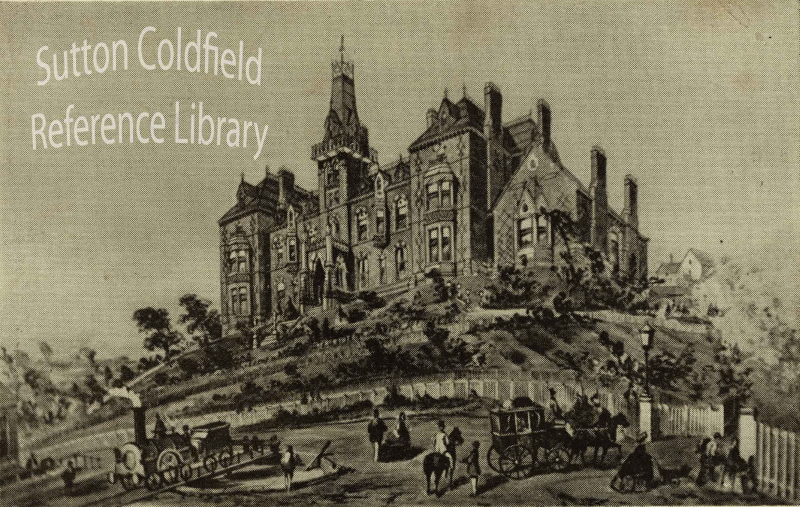The opening 0f the Sutton Coldfield Branch line of railway in 1862 marked a great change in the town’s history. Looking back, it seemed to later Victorians that it was the end of ‘old Sutton’, a rural market town idyll suddenly broken into by the harsh industrial age. The replacement of half a dozen horse-drawn omnibuses taking more than an hour over bumpy roads in 1860 by 16 trains a day in 1870 making the same journey to Birmingham in 25 minutes smoothly and comfortably was a revolution.
It seemed at first as though the main impact on Sutton would be to bring visitors to the town. In August 1862 more than twenty special excursion trains ran from Birmingham to Sutton, such was the attraction of Sutton Park. Some hopeful speculators formed a company to build a luxury hotel to cater for the wealthier visitors (now Sutton Council House), a venture which failed, but the park and the crystal palace (built in 1879) continued to attract great numbers and to warrant the running of excursion trains.
But by 1870 it had become clear that the main business of the line would be to carry commuters from their Sutton homes to their work in Birmingham, and Sutton’s transformation from sleepy market town to populous residential area was well under way. An old Suttonian recalled The Parade in 1902: six thirty, and men in cloth caps are hurrying to the station - they travel third class; eight o’clock, and men in business suits walk briskly to the station - they will travel second class; nine thirty, and cigar smoke pervades the air as men in top hats saunter by to catch the first class train.
The growth of Sutton as a commuter town had already begun before 1862, and Sutton’s biggest factory, Penns Mill, had closed in 1860. So although the advent of the railway did not itself change the course of our history, everyone blamed it for the loss of good old Sutton.

( Photograph - Sutton Library album)